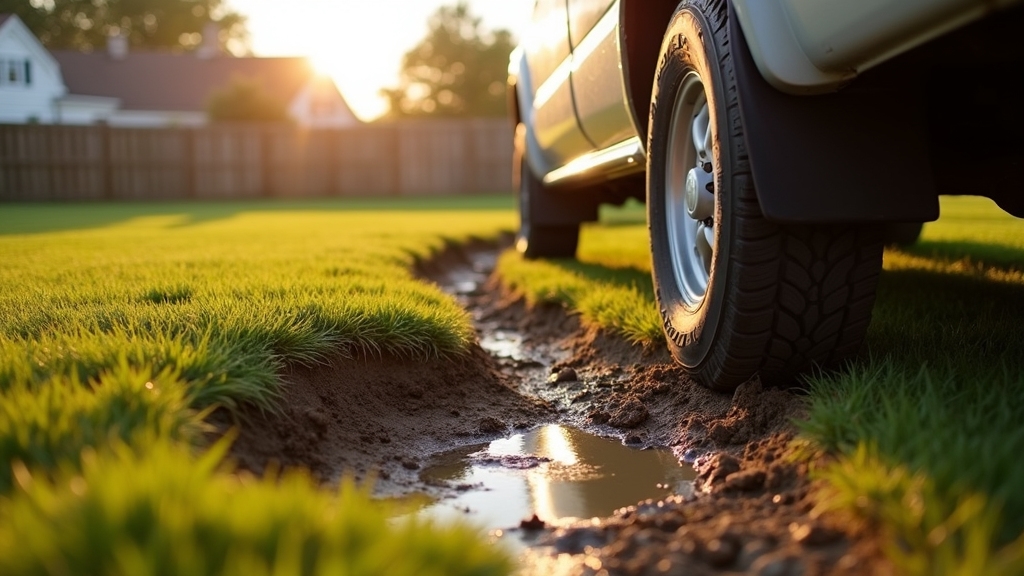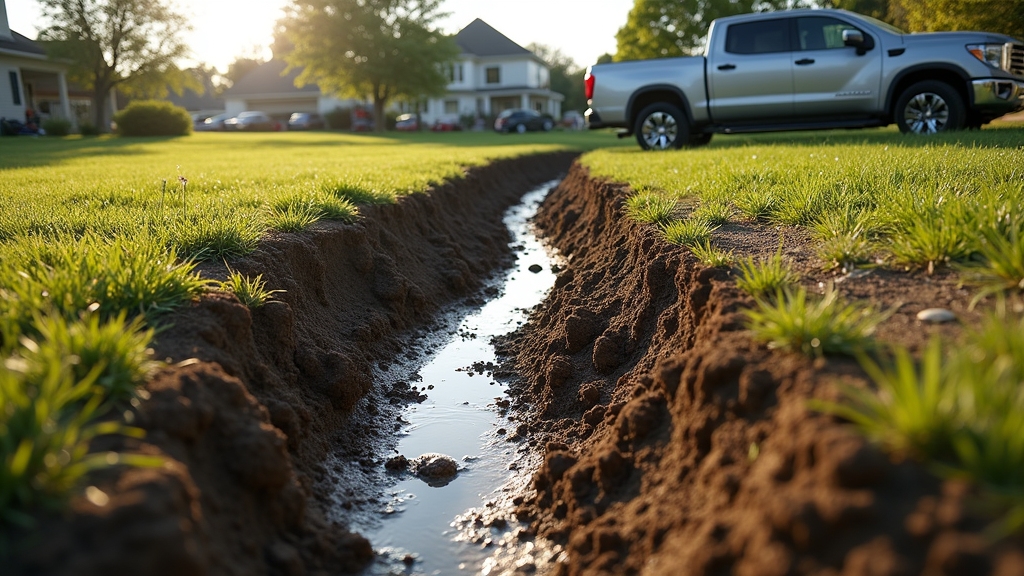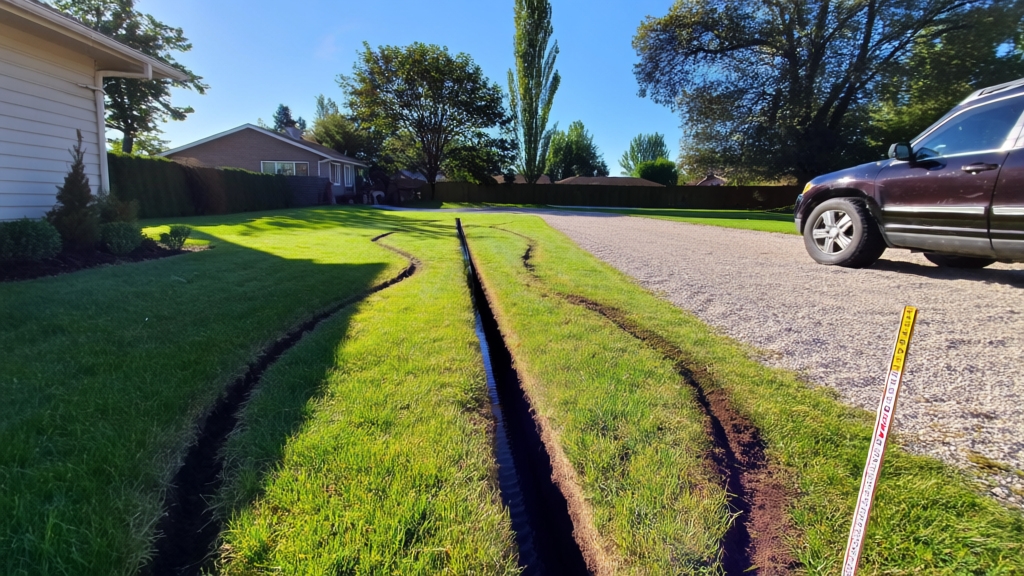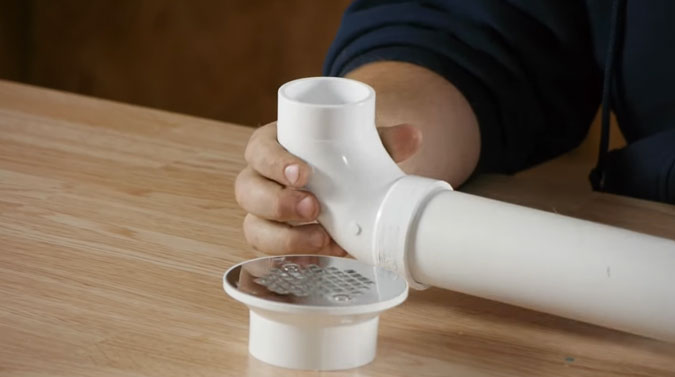You shouldn’t drive on a septic drain field because your vehicle’s weight compacts the soil, reducing its ability to absorb wastewater and potentially crushing underground pipes. This can cause system failures, backups, and costly repairs.
Soil compaction also interferes with microbial treatment, leading to surface pooling and increased risks of contamination. Protecting the drain field helps extend its lifespan and safeguards your property and environment.
Exploring further reveals practical measures to prevent damage and the serious consequences of neglecting this important maintenance.
Key Takeaways
- Driving on septic drain fields compacts soil, reducing absorption and risking system failure and costly repairs.
- Vehicle weight can damage underground pipes, causing leaks, blockages, and uneven wastewater distribution.
- Drain fields are typically shallow, with fragile pipes buried 18–30 inches deep, making them vulnerable to heavy loads.
- Mark drain fields and avoid driving to prevent soil compaction and structural damage.
- Damage to drain fields can lead to environmental contamination, health risks, and expensive remediation.
Risks Associated With Driving on Septic Drain Fields

When you drive on a septic drain field, you risk compacting the soil beneath your vehicle, which substantially reduces its ability to absorb and treat wastewater. Vehicle weight compresses soil particles, decreasing porosity and permeability, which impedes natural infiltration and causes effluent pooling on the surface.
This creates health hazards and accelerates system failure, potentially resulting in sewage backups. Additionally, soil compaction may require costly excavation and replacement to restore system function.
The drain field’s network of perforated pipes is also vulnerable; driving over them can cause undetectable damage, slow leaks, and uneven wastewater distribution. Such damage risks environmental contamination and system failure, requiring expensive repairs or complete replacement.
Avoiding vehicle traffic on drain fields is critical to maintaining septic system integrity and preventing costly, hazardous consequences. Proper handling and maintenance, including disassembling components when needed, help ensure system longevity and functionality.
How Vehicle Traffic Impacts Septic System Components?
Although septic systems are designed to manage household wastewater efficiently, vehicle traffic exerts significant stress on their components, compromising function and longevity.
Driving compresses soil, reducing aeration and water infiltration, while risking cracks or crushing of underground pipes. This damage hinders wastewater absorption, fosters backups, and impairs microbial digestion, accelerating system failure. You risk costly repairs if you ignore these effects.
Heavier vehicles like RVs or trucks cause greater damage than lighter vehicles due to increased pressure on septic components. Additionally, contamination from damaged systems can lead to serious environmental consequences similar to those caused by raw sewage in water bodies.
| Impact Area | Cause | Consequence |
|---|---|---|
| Soil Compaction | Vehicle weight compresses soil | Reduced infiltration, pooling |
| Pipe Damage | Crushing or cracking | Leaks, blockages, root intrusion |
| Flow Disruption | Impaired soil and pipes | Backups, uneven effluent spread |
| Microbial Activity | Oxygen deprivation | Reduced organic matter breakdown |
| System Longevity | Structural and functional loss | Premature drain field failure |
Depth and Structural Vulnerability of Septic Systems
Because septic drain fields are typically installed between 18 and 30 inches below ground, their depth critically influences both structural vulnerability and system performance. You need at least 12 inches of absorptive soil below trenches to guarantee proper effluent treatment and prevent contamination.
Drainfield trenches rest on stable, undisturbed earth to minimize settling, with a maximum soil cover of about 36 inches; exceeding this risks compressing drainage media and damaging pipes. The size of the drainfield is also determined by the soil’s percolation capacity and daily wastewater volume to ensure effective effluent absorption.
Regular inspection and maintenance help identify potential soil or structural issues before they cause system failure. The bottom of trenches must remain at least 24 inches above the seasonal high water table to avoid system failure.
Soil type and slope, typically with no more than a 4-inch drop per 100 feet, impact stability and drainage. If the depth or soil cover isn’t appropriate, you risk structural damage, effluent bypass, or system collapse.
Best Practices for Protecting Your Septic Drain Field
Understanding the depth and soil conditions of your septic drain field helps highlight why protecting it from physical stress and environmental factors matters. Clearly mark your drain field to prevent accidental damage and avoid parking or driving vehicles on it to prevent soil compaction.
Use shallow-rooted grasses or native plants for ground cover, steering clear of trees, shrubs, or vegetable gardens nearby to prevent root intrusion and soil disturbance. Divert surface runoff away from the area using grading or drainage systems, limit irrigation during wet periods, and avoid water pooling to prevent saturation.
Perform regular inspections for soggy areas or unusual vegetation and schedule septic tank pumping to maintain function. During construction, install physical barriers and plan vehicle routes to minimize impact on septic components and soil integrity.
Additionally, addressing leaking pipes or fittings nearby can help maintain proper soil stability around your drain field.
Environmental and Financial Consequences of Drain Field Damage

When a septic drain field becomes damaged, it compromises the treatment of wastewater, allowing contaminants like nitrates, bacteria, and viruses to seep into groundwater and surface water sources. This contamination poses serious health risks, including methemoglobinemia in infants and infectious diseases.
Nutrient overload from nitrogen and phosphorus promotes harmful algae blooms, depleting oxygen and harming aquatic ecosystems. In addition, failing septic systems can lead to soil contamination, which reduces the soil’s natural filtering capacity and harms local vegetation.
Soil quality also deteriorates as waterlogging kills plants and fosters pest habitats. Regular inspections and proper maintenance can help prevent such damage and prolong the drain field’s effectiveness. Damage to septic drain fields lets harmful contaminants enter groundwater and surface water, threatening health and the environment.
Financially, repairing or replacing drain fields can cost thousands, with delayed fixes escalating expenses due to system failures and water cleanup. Additionally, damaged fields reduce property values and increase septic system strain, shortening component lifespans. Protecting your drain field is essential to avoid these costly environmental and economic consequences.
Frequently Asked Questions
How Can I Locate My Septic Drain Field on My Property?
You can locate your septic drain field by first checking local health department records or original installation plans. Visually, look for greener grass lines, moist spots, or depressions indicating pipe locations.
Follow drain lines from the house exterior and use a soil probe to detect gravel beds beneath the soil. For precise results, hire professionals who utilize ground penetrating radar (GPR) or frequency locators to map underground pipes accurately and avoid damage.
Are There Specific Types of Vehicles That Cause Less Damage?
Yes, vehicles with lower weight and wider or low ground pressure tires cause less damage to septic drain fields. Electric golf carts and utility vehicles designed for soft terrain distribute weight more evenly, reducing soil compaction risks.
You should avoid heavy trucks or trailers, especially if you drive frequently on the area. Using such lighter vehicles infrequently minimizes cumulative stress, but the best approach is to avoid driving on drain fields altogether to preserve system integrity.
Can Seasonal Weather Affect the Vulnerability of My Drain Field?
Yes, seasonal weather considerably affects your drain field’s vulnerability. Spring’s moisture saturates soil, reducing absorption and increasing hydraulic overload risks. Freeze-thaw cycles in winter can crack pipes, impairing function. Dry periods improve drainage but may cause soil cracking if extreme.
You can’t just ignore these effects; managing water flow, insulating pipes, and limiting stress during wet seasons help maintain system integrity and prevent costly damage.
What Are Early Signs of Drain Field Damage to Watch For?
You should watch for wet or soggy spots above your drain field, especially if soil stays saturated during dry weather. Slow or backed-up drains inside your home signal wastewater isn’t dispersing properly. Lush, unusually green grass patches over the field indicate leaking effluent.
Also, offensive sewage odors near the septic area often precede visible damage. These early signs mean your drain field may be failing and require prompt professional inspection.
Is a Professional Inspection Necessary After an Accidental Vehicle Driving on the Field?
Think of your septic drain field as a sponge; when you drive over it, you’re squeezing that sponge, risking unseen damage. Yes, you absolutely need a professional inspection after accidentally driving on the field.
Vehicle weight can compact soil and crack pipes, impairing wastewater absorption. Experts use specialized tools to detect hidden issues early, preventing costly repairs and environmental hazards. Don’t gamble with your system’s health—act promptly to protect it.
Simple Ways to Protect Your Septic System’s Lifespan
You might think driving on your septic drain field is harmless, but it can seriously damage the system’s delicate pipes and soil structure. Even light vehicles can compact the soil, reducing its ability to filter waste properly.
Protecting your drain field by keeping vehicles off it not only preserves system function but also prevents costly repairs and environmental hazards. So, avoid driving on your drain field to guarantee long-term septic system health and efficiency.


